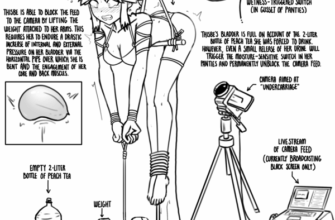In an era where healthcare systems worldwide grapple with increasing patient loads, pervasive physician burnout, and the relentless march of chronic conditions, a pragmatic solution is gaining traction: the strategic integration of non-medical specialists. These professionals, while not holding a traditional medical degree, possess specialized knowledge and skills that could significantly alleviate the strain on frontline medical doctors, streamlining patient care and enhancing overall system efficiency.
- The Overburdened System: A Universal Challenge
- Beyond the Scalpel: The Role of Allied Health Professionals
- Podiatrists: The First Line of Defense for Foot Health
- Osteopaths: Champions of Preventive Musculoskeletal Care
- The Bureaucratic Conundrum: A Snail`s Pace of Progress
- A Healthier Future: Collaborative and Comprehensive
The Overburdened System: A Universal Challenge
Consider the typical journey of a patient seeking care. Often, the first point of contact is a general practitioner or a specialist, even for issues that might not strictly require a physician`s diagnostic prowess. This funneling creates bottlenecks, extending wait times, and diverting doctors from more complex, critical cases that demand their unique expertise. The result is a cycle of exhaustion for medical staff and frustration for patients. It`s a scenario played out in countless clinics and hospitals globally, hinting at a structural inefficiency rather than a mere shortage of doctors.
Beyond the Scalpel: The Role of Allied Health Professionals
The concept hinges on empowering a broader spectrum of skilled professionals. Think of clinical psychologists assisting with mental health screening, speech-language pathologists aiding developmental assessments, or nutritionists contributing to dietary management. Each brings a vital piece to the complex puzzle of patient well-being, often requiring less extensive, but equally specialized, training compared to medical doctors. Two particularly compelling examples recently highlighted in discussions surrounding healthcare optimization are **podiatrists** and **osteopaths**.
Podiatrists: The First Line of Defense for Foot Health
Podiatrists specialize in the diagnosis and treatment of conditions affecting the foot, ankle, and lower leg. While seemingly niche, foot health is intricately linked to broader systemic conditions, especially for patients with diabetes or circulatory issues. A common proposal suggests that podiatrists could serve as a primary filtering mechanism for foot-related complaints. Imagine a patient presenting with a minor ingrown toenail or a common fungal infection. Instead of occupying a dermatologist`s, endocrinologist`s, or even a general practitioner`s valuable time, a podiatrist could provide initial assessment and routine care. This proactive approach would:
- Reduce Physician Workload: Freeing up dermatologists, endocrinologists, orthopedists, and surgeons for more critical cases.
- Expedite Patient Access: Patients receive quicker attention for common ailments, improving satisfaction and potentially preventing escalation.
- Improve Overall Efficiency: Ensures that highly trained medical doctors can focus their expertise where it is most needed.
It`s a logical delegation of duties, allowing the right professional to address the right problem at the right time, much like an intelligent traffic controller for patient flow.
Osteopaths: Champions of Preventive Musculoskeletal Care
Osteopathy focuses on the body`s interconnected systems, emphasizing how the musculoskeletal system influences overall health. Osteopaths use manual techniques to diagnose and treat structural and functional imbalances. Their potential contribution extends significantly into preventive medicine. By developing personalized nutrition plans, designing tailored exercise regimens, and identifying predispositions to certain conditions, osteopaths can play a crucial role in:
- Disease Prevention: Addressing root causes of musculoskeletal issues before conditions escalate into chronic pain or disability.
- Holistic Wellness: Promoting overall health and body functionality rather than just treating symptoms in isolation.
- Reducing Future Burden: Potentially decreasing the incidence of chronic musculoskeletal issues that would otherwise require intensive specialist medical intervention or even surgery.
This approach shifts the paradigm from reactive treatment to proactive health management, a cornerstone of sustainable and patient-centered healthcare.
The Bureaucratic Conundrum: A Snail`s Pace of Progress
Despite the evident benefits, integrating these roles seamlessly into established healthcare systems isn`t without its hurdles. One might wonder why such a seemingly straightforward concept requires a bureaucratic odyssey. The primary challenge often lies in formal recognition and regulation. For instance, in some regions, the specialty of “osteopath” only recently gained official recognition (as late as 2015 in Russia), while “podologist” remains outside the official nomenclature of medical and pharmaceutical professions, despite their clear practical utility.
The irony is palpable: the very systems designed to protect public health can sometimes inadvertently hinder innovations that promise greater efficiency and accessibility.
This regulatory lag often prevents these skilled professionals from being fully utilized within the public healthcare framework, relegating them to private practice or limiting their scope within integrated systems. The process of formalizing new roles involves extensive debate over education standards, scope of practice, and reimbursement models – all valid concerns, but ones that ideally would move with greater agility given the pressing needs of modern healthcare.
A Healthier Future: Collaborative and Comprehensive
The move towards integrating non-medical specialists is not about replacing doctors but augmenting their capabilities and extending the reach of quality healthcare. It`s about fostering a collaborative environment where each professional contributes their unique expertise to a patient-centric ecosystem. As healthcare systems globally seek sustainable models capable of handling evolving health challenges, embracing the full spectrum of allied health professionals represents a logical and necessary step toward a more efficient, accessible, and ultimately, healthier future for all. It`s an investment in holistic well-being that promises dividends for both patients and the professionals who serve them.







